How to choose a motorcycle jacket
Published on: 01 July 2021
This is the second in our series of guides about what you need to know, and what you should look for, when buying motorcycle gear. In our first article, we focussed on jeans. This time round we are looking at jackets.
Now the most important piece of equipment you will ever buy for the bike, from a safety standpoint, is going to be a helmet. And we will be doing a helmet buying guide soon, but arguably the most important item from a comfort perspective will be your jacket. In this review, we are not going to be comparing one brand of jacket with another. Rather, we’ll be talking about the different types of jacket. We’ll be talking about the various methods of jacket construction, and we will try and explain for what kind of riding, and for what kind of rider, these various jacket types are designed.
Now I’ve mentioned comfort, and that’s because comfort plays a much more important role in safe riding than many realise. This is, it has to be acknowledged, quite a modern concept. Back in the day, being comfortable on the bike was not much discussed. And that’s for a number of reasons. First, nobody expected riding a motorbike to be anything less than tough. This was what was expected when you rode a motorbike. It was part of the appeal. And it was why bikers stood out from the crowd. They were a hardy bunch. If you wanted to be warm and dry, you either stayed at home or drove a car!
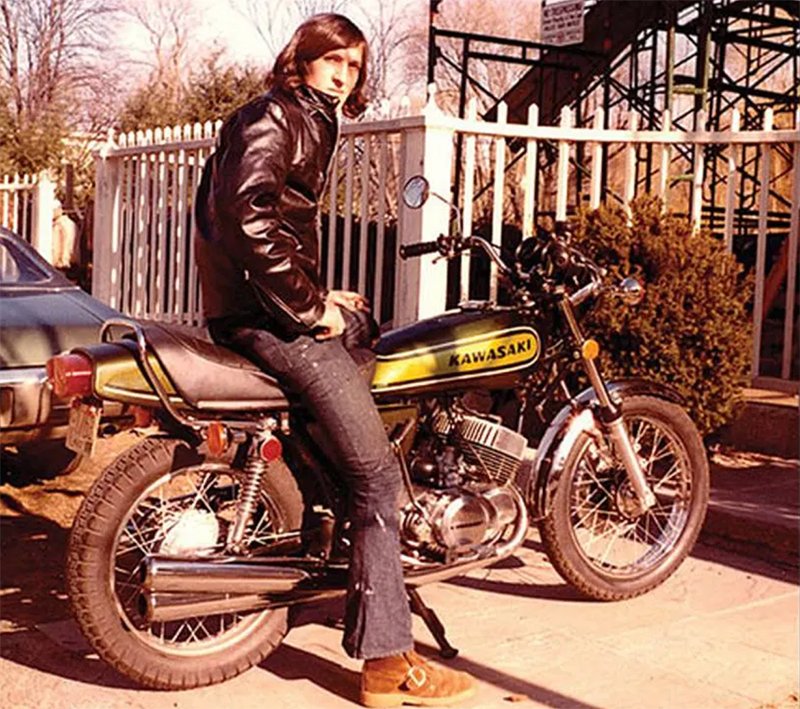
But partly this whole ethos was borne out of a kind of necessity, because the gear that was available back then was quite rudimentary. It was built with longevity in mind not with pampering. If you rode a motorbike, it wasn’t really possible to stay dry if it rained. You could stay a bit warmer by putting lots of jumpers on. And if it was hot, well you just rode in your T-shirt. Nobody had heard of Gore-Tex, heated jackets had not been invented and Outlast was something worn by astronauts, not motorcyclists.

But that was then; this is now. And what we realise now is that one of the most important factors in riding safely is being comfortable on the bike, because only when you are comfortable and relaxed on the bike can you direct all your reserves at the task of staying alive. Ideally, we want to be bone dry when it rains, warm when it is cold, and cool when it is hot. This concept is known as ‘passive safety. And we think it is hugely important. Some people focus solely on gear that is going to protect them when they come off. We prefer the notion of wearing gear that is going to make it less likely that you will have an accident in the first place. If you’re relaxed on the bars, you may well spot the white van hidden by the hedge that is going to pull out in front of you. If you’re soaking wet, freezing cold or unbearably hot, there’s an increased chance that you won’t.
Anyway, let’s talk about jackets.
For the rider who wants to be able to ride in all conditions, the solution is inevitably going to be a textile jacket of some description.
We have nothing against leather or leather jackets. Leather can be incredibly comfortable. It is naturally abrasion resistant. And, of course, nothing looks cooler than a leather jacket. But the window of opportunity for wearing a leather jacket is quite narrow. And that’s because leather doesn’t breathe, so it’s less than ideal when it’s really hot. For the same reason, leather isn’t great when it’s cold, because if you layer up underneath your jacket to insulate heat from the body, your sweat can’t go anywhere, and you’ll end up feeling wet and sticky. And leather is absolutely useless when it rains. Think about dropping a dry chamois cloth into a bucket of hot water. That’s pretty much what happens to leather when it rains.
Leather is kind of a lifestyle choice. Yes, a leather jacket is going to be more abrasion resistant than most textile jackets, and so some people go for leather because they perceive it to be a safer option, but just as often people go for leather because they think it is sexier or cooler. And we have no problem with this. Every biker has to have a leather jacket. And on the right kind of day a leather jacket is a lovely thing to ride in. But here in the UK there are probably going to be more days where a leather jacket is not the best choice than there will be days when it is.

So go for a leather jacket if you want to look cool. If you own a Harley or Bonnie, and only go out for a ride when the long-term forecast shows nothing but sunshine, then get yourself a leather jacket. Even one with tassels. If you ride a super-cool retro, a genuine classic or some kind of bikeshed custom bike, you may well feel that only a cafe-racer leather jacket looks right. And you are probably right. But for longer-distance rides, and for riding in all conditions, then you are going to need a textile jacket of some description.
So let’s take a look at the different types of textile jacket that are available. We’re then going to spend a few minutes looking at each form of construction. The styles we are going to talk about are; mesh jackets, unlined, non-waterproof jackets, wax cotton jackets, jackets with removable membranes, drop-liner jackets and laminated jackets.
Lets talk first about mesh jackets.
Mesh jackets are normally incredibly lightweight. They are designed to be worn only in the hottest conditions, and normally consist of a basic Nylon chassis with mesh panels on the chest and sometimes also up the arms and in the back.
Personally, I have never worn a mesh jacket in the UK. Most people wouldn’t need a mesh jacket until the temperature climbed into the upper twenties. That simply doesn’t happen a heck of a lot over here. And for many people an unlined, non-waterproof jacket will serve them just as well as a mesh jacket, and will be much more practical.
Mesh jackets were really designed for hotter climates than ours. Of course if, like my wife, you always run hot or if you ride a lot in the city centre through the summer, you might find a mesh jacket is more useful. One of our issues has always been that mesh jackets are not particularly protective, although these days any mesh jacket will be CE approved to at least the lowest A standard.
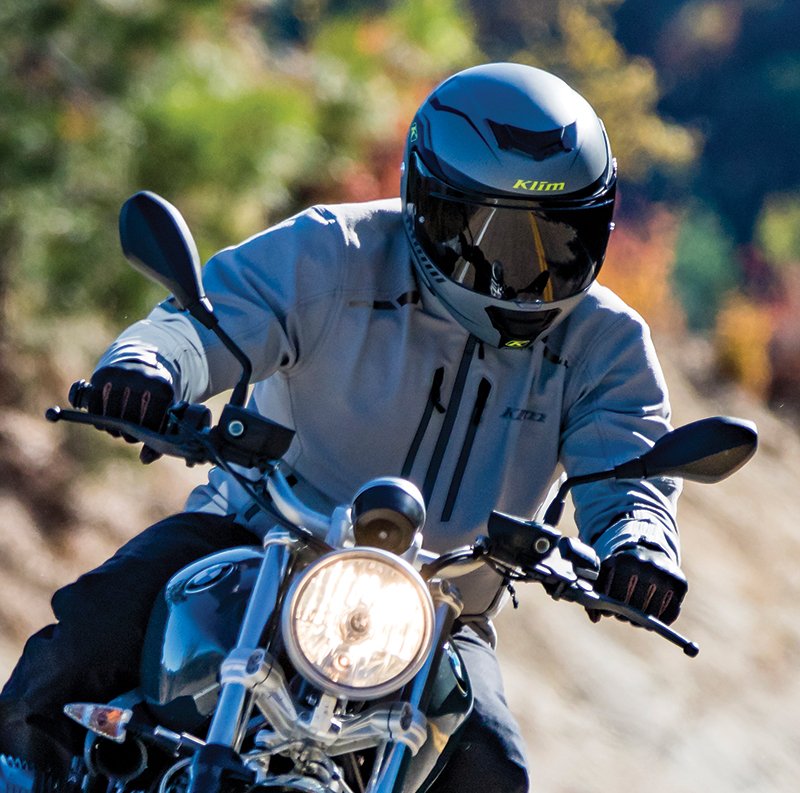
In recent years, a new much tougher type of mesh jacket has come to the fore. We’re talking about jackets like the Rukka Forsair and the Klim Marrakesh. These jackets are knitted, or loosely-woven, from a heavy-duty Cordura and they flow air through every single panel. They flow more air than your average mesh jacket. And they are more protective than your average mesh jacket. But, predictably perhaps, they cost more than your average mesh jacket.
There is another application for mesh jackets, and that is if you ride off road, and are generating a lot of your own heat. Most mesh jackets, in truth, are not cut or styled for off-road riding, although something like the Klim Marrakesh very much is.
For most bikers a mesh jacket is not going to be absolutely necessary. Yes, there will be days where a mesh jacket might be appreciated, but for most of the time a traditional mesh jacket will be excessive. At the height of a summer’s day, a mesh jacket might be refreshing to ride in, but in the morning or the evening it will probably flow too much air. You run the risk of freezing to death!
A mesh jacket is the most breathable of all jackets although, as we have intimated, a mesh jacket can be a little too cooling, and is not always what you might want to wear here in the UK, even on a warm summer’s day.
And if this is something you are worried about, you might want to look at a lightweight, summer jacket without a membrane. A jacket without a membrane is going to be nice to wear in warm weather. A waterproof membrane is a windproof membrane so there will be little stopping the air from reaching the body. It won’t flow air quite like a mesh jacket, but that can be a good thing.
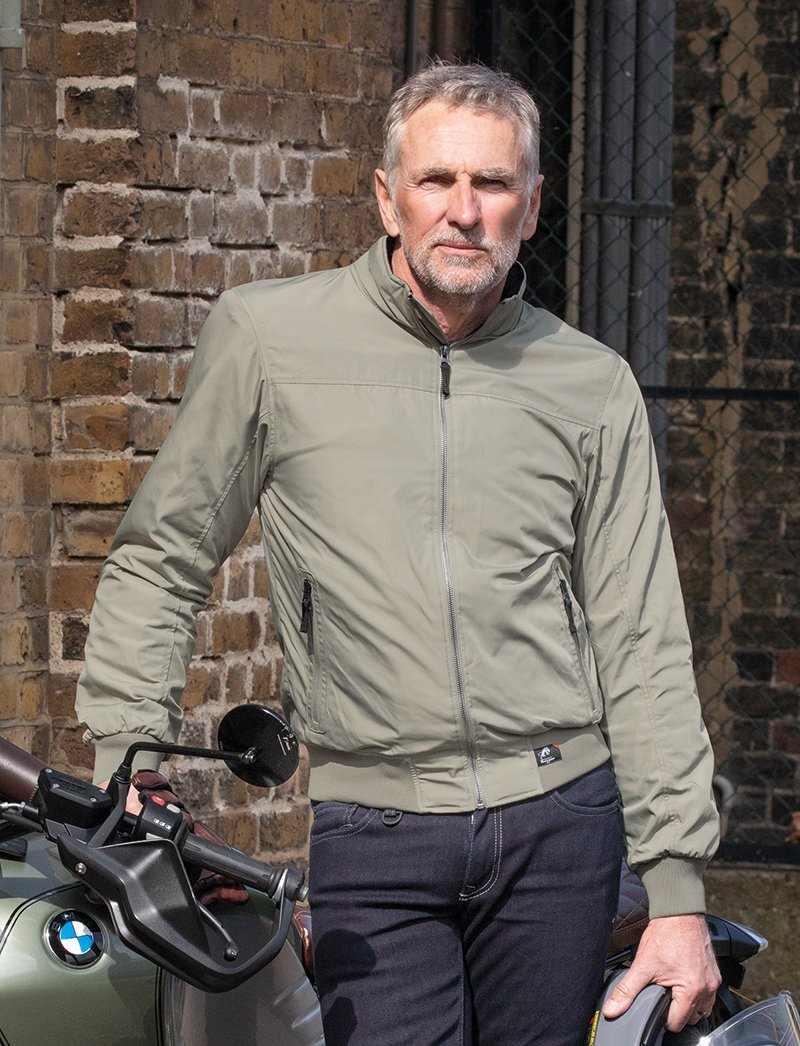
The other thing about jackets like this is that they are easy to wear, and often look like the kind of jacket you might buy from a shop on the high street. We have in mind jackets like the Furygan Kenya Evo or the Raymond jacket from Rukka. We sometimes call these jackets ‘throw-on’ jackets. A jacket like this is unlikely to be your main jacket, but you might keep it in the hallway to throw on when you just want to pop down to the shops.
These jackets are going to be pretty useless in the rain, of course, although you might well get something like a PU coating or some kind of DWR that will perhaps keep you dry for half an hour or so.
The window for wearing jackets like this is quite narrow, but there will be a time when a jacket like this is going to the nicest and most comfortable way to ride. These jackets are rarely expensive, but they do play a part in every biker’s wardrobe.
This is another style of jacket that is perhaps less relevant to riding in the UK than it might be to riding in other countries.
The style is most associated with adventure riding and adventure bikes. And that is because such a jacket will enable you to ride in a wide array of climactic conditions. Let’s say you are on a big adventure. If the temperatures are high or if you are working hard off road, you will want to unzip the waterproof/windproof liner. Once removed, the oncoming air will be able to reach the body to cool the rider down. By the same token, the absence of the membrane will allow you to sweat more freely. Even the most breathable membrane will get in the way of perspiration, and sweating is the way the body cells itself down, so being able to remove this lining can literally be a life saver. Another feature of these jackets is normally a huge provision for venting, and this only serves to make them even nicer to wear when it’s really hot.
But a few hours later, on your big adventure, the heavens might open, so in a jacket like this you will have the ability to put the lining in, in order to stave off the rain. Jackets such as this, therefore, are pretty versatile. And if you are travelling the world you might appreciate the fact that this one jacket appears to do everything.
Personally, we are not so convinced.
If I was on a big adventure, I would want to wear my waterproof outside my protective jacket. This way, after it stopped raining, I would have a bone dry jacket beneath the waterproof so that I could continue riding in comfort. For us here at Motolegends, a highly breathable jacket like the Klim Baja S4 or the Klim Marrakesh with a Kim Zephyr to go underneath when it was cooler, and a Scott waterproof to go over it when it rained, would be preferable.

Some people come to the conclusion that with a jacket with a removable liner they have a jacket that will work for them all year round and in all conditions. Some believe they can therefore commute in such a jacket through all four seasons. The reality is a bit different. It would need to be a very hot day here in the UK for you to want to ride with the membrane removed. But, more importantly, zip out membranes are not particularly good at keeping the rain out. Fine if you’re in Morocco and there’s a sudden downpour. You’ll stay pretty dry, but water can wick from the outer chassis of the jacket through the zip to reach the body, so in heavy and prolonged rain, you will get wet. And so you are going to be disappointed if you think you can commute through a wet British winter with one of these so-called adventure jackets. You have to view these jackets as a compromise. Jack of all trades; master of none. Great when it’s hot, but not so great in the wet.
Some adventure jackets also come with token thermal liners. They are usually not up to much, and you would nearly always be best advised to provide your own insulating layers.
Finally, before all the Smart Alecs hit the comment button on YouTube, yes, some adventure jackets have a waterproof layer that can be worn inside and outside the main jacket. Now, it’s difficult to make this work, but some manufacturers have managed to do this. And in this scenario you do start to move towards a jacket that is more universal.
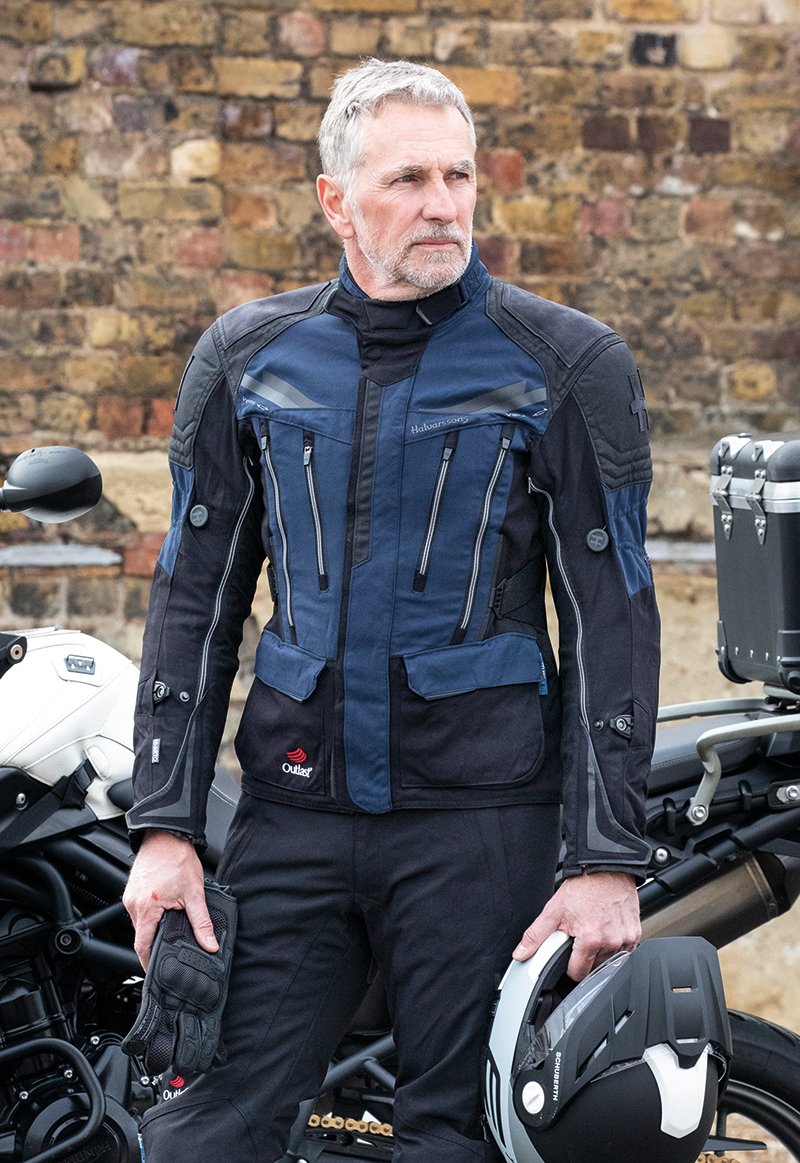
But there can be no doubt that adventure jackets with removable membranes are popular. Part of the reason for this, of course, is fashion. You buy an adventure bike; and so you feel you need an adventure helmet with a peak, some huge, heavy boots, metal panniers, extra spotlights and an adventure suit. Given that, here in the UK, you will spend most of your time on the black stuff, an adventure jacket/suit is probably not the most practical solution, but let’s face it, we all like to dress up for the bike a little.
Of course, many people end up with such a jacket almost by default. You buy a GS, and your BMW dealer will generously offer you an allowance to get the matching adventure suit. And that’s partly because it costs BMW far less than it would if they gave you the equivalent as a discount, but also because you will also then become a mobile advertising hoarding for BMW wherever you go. That may be a reality, but the other reality might well be that a different type of jacket would serve you better.
As an aside, however, if you started with an adventure jacket, had a Scott waterproof to go on over the jacket when it rained and something like the Rukka Forsair to go underneath in the cold, you would potentially be able to create a very versatile system. The only problem would be the inconvenience of having to stop to put bits on or take them off.
Now, well over 90% of waterproof jackets on the market are equipped with drop-liner membranes. A drop-liner membrane cannot be removed. It is stitched into the jacket. The reason that the membrane is called a drop-liner membrane is that it ‘hangs down’ or ‘drops down’ from the shoulders. Where the membrane is stitched in, the seams are taped to prevent any leakage.
Drop liner jackets are comfortable. The outer chassis of the jacket and the membrane sort of fold in together and mould to the shape of the body. Drop-liner jackets are also not expensive to make, so accordingly they can be very affordable. Drop-liner jackets are also naturally warm, and that’s because the air gap between the chassis of the jacket and the membrane traps warm air from the body.
Of course, in extreme heat, a drop liner jacket can become a sweaty and sticky, because the membrane will impair the jacket’s breathability. And this is why, as the temperatures hit the mid-twenties, a drop-liner jacket, even one with vents, will start to reach its level of incompetence.
Nonetheless, drop-liner jackets work for most riders. They are comfortable. You won’t get wet in a good-quality, drop-liner jacket. The membrane will also reduce the effects of wind chill. So, a drop-liner jacket will act to keep you warm and dry. But there are some downsides; the other side of the coin, as it were.
The membrane in a drop-liner jacket will keep the rain away from the body. Membranes comprise millions of holes. The simplest way to explain how a membrane works is to say that the holes are to small for water droplets to pass through from the outside. Yet they are large enough to permit the passing out of warm and wet vapour from the body; ie: sweat.
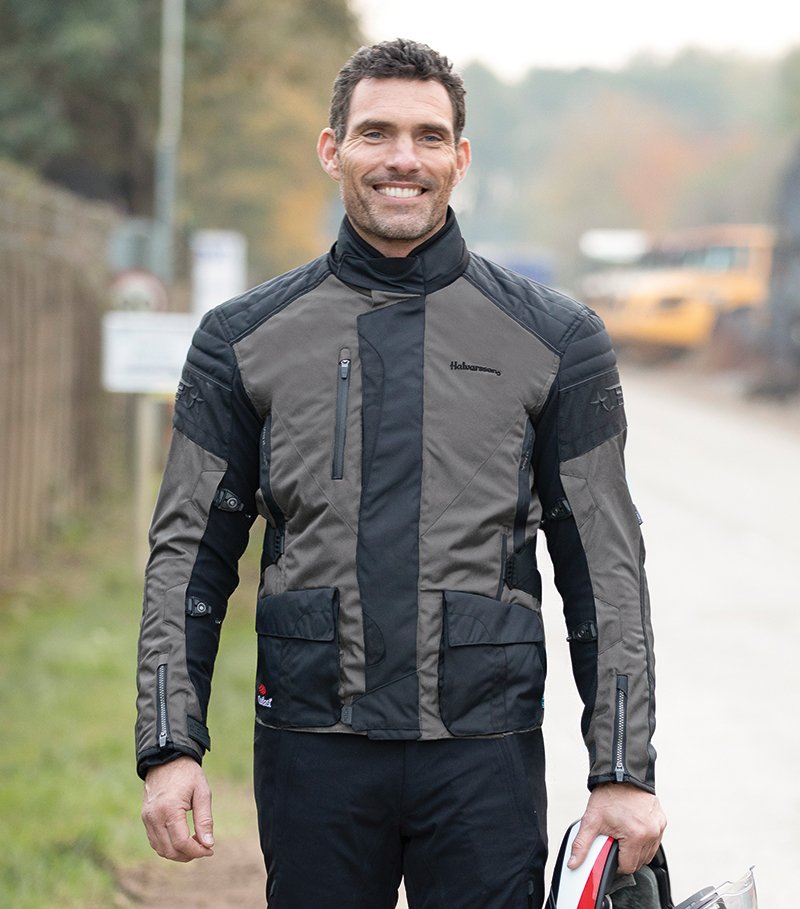
So, in theory, even though every membrane has its physical limits, you won’t get wet in a drop liner jacket in two, three, four or more hours in the rain. But after, say three hours or so, dependant upon your speed and the heaviness of the rain, the water can pass through the jacket’s outer fabric and swill around between the jacket’s chassis and the membrane. This creates a state that we term ‘wet out’. The jacket becomes literally sodden with water.
The water being held by the jacket will make it feel heavy; this can be uncomfortable and cause chafing. A ‘wet out’ jacket can also become a very cold jacket. The wind chill factor at speed will cause the water to reduce in temperature. And that will make the rider feel cold. But there’s another factor. Heat from the body conducts through a wet medium far faster than through a dry medium. So if you’ve got a wet jacket, and are riding in the cold, your temperature can drop rapidly. If you’re riding at speed at night, hypothermia is not a million miles down the road.
A ‘wet out’ jacket can also take an eternity to dry out once you stop riding. If you’re on tour, and ride all day in the rain, you may well find your jacket is still dripping in the morning. And nobody likes to start the day with a wet jacket.
The same problem often besets commuters. Let’s say your ride into work lasts an hour. On your ride in, it rains hard. Your jacket may not become fully ‘wet out’ on this journey, but a drop-liner jacket will have absorbed a fair amount of moisture. When it comes to to ride home, eight hours later, you may still have a damp jacket. It’s the winter, it’s six o’clock. It’s cold and it’s dark. You don’t really want to be setting off on this hazardous ride home in a damp jacket.
Of course, if you were to wear something like a Scott waterproof over your drop-liner jacket, you can avoid wetting out. Yes, this can be a bit of a hassle, but it could save you a lot of money. For an extra £70, you would, in effect, be creating a jacket that in some ways is better than a laminated jacket. And that’s because it will not be able to soak up the rain. (We’ll discuss laminate jacket’s later).
For hundreds of years, cotton jackets have been impregnated with wax to make them waterproof. And in the early days of Belstaff and Barbour that’s what those brands basically produced. But when the wax dried out those jackets would cease to be waterproof, although of course a wax cotton jacket could be re-waxed. Thankfully, these days most wax cotton motorcycle jackets are also backed by a waterproof membrane.
Now a combination of the wax and a membrane mean that a wax cotton jacket will usually be extremely waterproof, because you’ve got two barriers against the rain. A wax cotton jacket will therefore never wet out.
But the downside is that a wax cotton jacket will not be particularly breathable; again because there are two barriers for your sweat to pass through. And this that means that such a jacket can be a little unpleasant in hot weather. The heavier the jacket the hotter it will probably be, but a wax cotton jacket is not something you want to wear if you’re riding in the desert. I did once, and it didn’t end well!
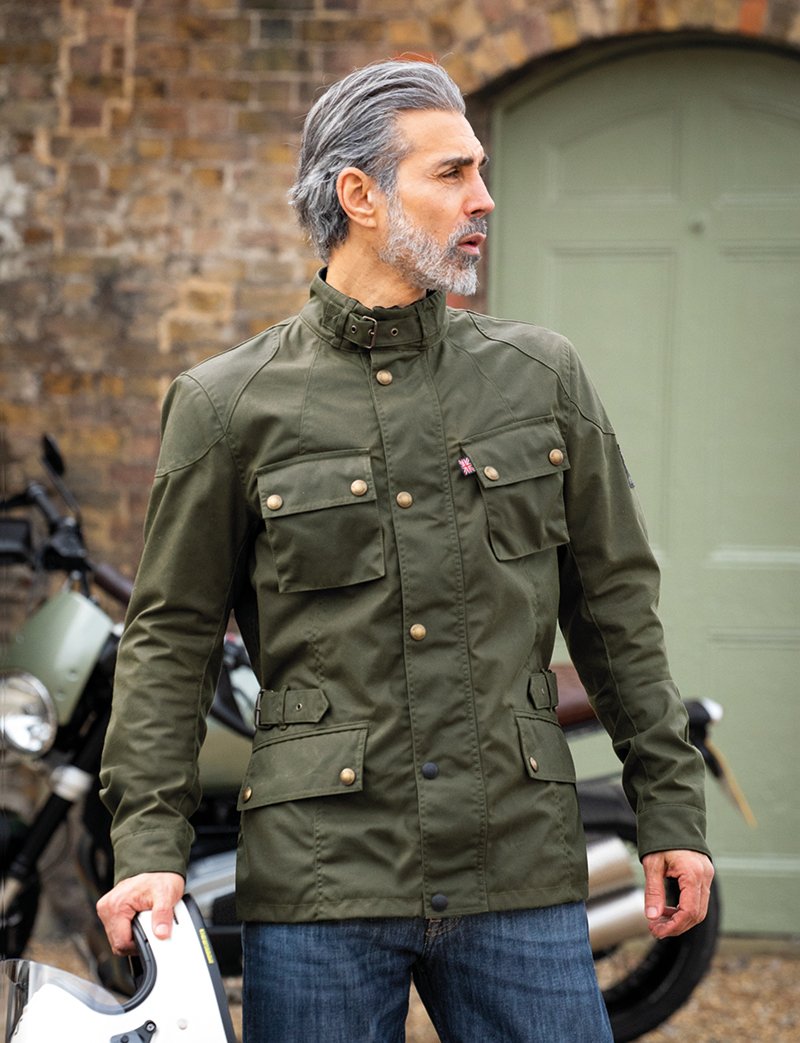
Normally, wax cotton is the choice of those looking for a classic aesthetic. It is what you’d wear on a classic bike, and on a modern retro a wax cotton jacket will look just right. We do, though, have customers who commute in a wax cotton jacket, and with an appropriate mid-layer you can indeed stay warm and dry right through a British winter.
We love wax cotton. Wax cotton jackets look stylish. Normally, a wax cotton jacket is the kind of jacket you could wear off the bike even if you’re going to the finest restaurant. Just don’t think of embarking on a long, hazardous adventure in a wax cotton jacket. Like Ewan McGregor did!

Laminated waterproof jackets are constructed in a way that doesn’t allow water to be absorbed by the jacket. In a traditional, waterproof jacket, as we have discussed, the waterproof membrane hangs independently inside the outer shell. But with a laminated jacket the waterproof membrane is laminated or heat sealed to the inner side of the outer shell. Now, technically, this doesn’t mean that a laminated jacket is more waterproof than a drop-liner one. Both forms of construction will keep you dry. But, nonetheless, a laminated jacket does offer certain advantages.
Because the membrane is affixed to the outer fabric, water cannot pass through the outer chassis in the way that it can with a drop-liner jacket. This means that laminate jackets never get soaking wet. They do not wet out.
As we have suggested, this does not mean that a laminate jacket will necessarily keep the wearer any drier than a drop-liner one, because in both cases the rain cannot pass through the membrane. But whereas a drop-liner jacket will eventually become heavy with the rain that it has absorbed, a laminated jacket will not.
Now because a laminated jacket will not hold large amounts of water the rider will often stay warmer. A ‘wet out’ jacket can become very uncomfortable when the conditions are cold and when your riding at speed. A laminated jacket will, therefore, almost certainly be nicer to wear in the cold and wet.

Laminated jackets are popular with those who commute long distances on a daily basis. Ride into work in the rain, and if you have a drop-liner jacket you will face the prospect of riding home in the evening in a damp jacket, and that is not nice. A laminated jacket, by contrast, will dry out quickly. A few hours after you get into work, the jacket will be dry. You won’t, therefore, have to put on a wet jacket for the ride home.
The other people who can perhaps derive a great benefit from a laminated jacket are those who tour a lot. Let’s say you are facing an eight hour ride on a day when you know it’s going to rain heavily. After four or five hours, a drop-liner jacket will end up soaking, sodden wet. The rest of the ride will be very uncomfortable and sometimes very cold. In the morning a drop-liner jacket will still be wet. A laminated jacket wouldn’t be.
Ironically, in dry but wet conditions, a laminated jacket will be colder to ride in because of the absence of an air gap between the outer chassis and the membrane. And that air gap on a drop-liner jacket retains the heat.
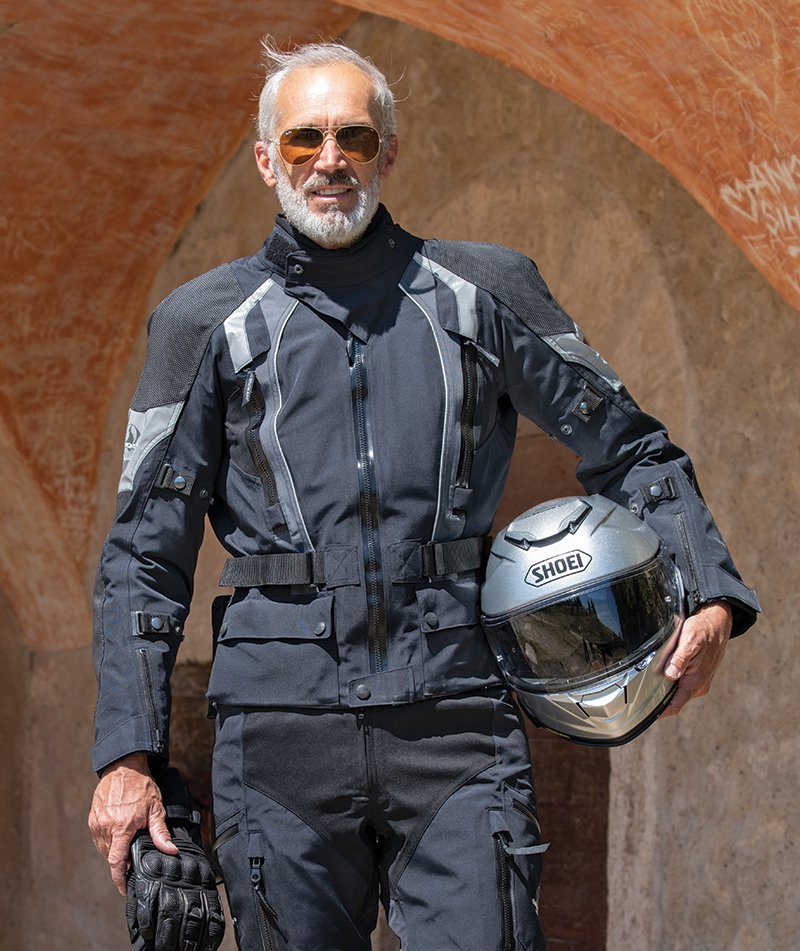
One distinct advantage of a laminated jacket is that the vents will be more effective. And that’s because, when you have a zipped vent the air can pass directly to the body. In a drop liner jacket, the air will still have to pass through a waterproof/windproof membrane. But the bottom line is that any jacket with a membrane is going to be uncomfortable in the heat, and a laminated membrane is no different in this regard. If you’re going anywhere really hot, or if you’re generating your own heat off-road, you really don’t want to be wearing a laminated jacket, or for that matter a drop-liner jacket.
One of the most obvious downsides of a laminated jacket is that it is less comfortable to wear and ride in. When you laminate the membrane to the outer shell, the result is a degree of stiffness. Some laminated jackets are better than others, but a certain ‘crinkliness’ is a typical hallmark of a laminated jacket. This can be an issue for the weekend or leisure rider. But if you do big miles, you may well be prepared to accept this as a trade off for the performance benefits.
Finally, laminated jackets have historically been more expensive, although in recent years the prices on laminates have come down. The problem is this. To make a laminated jacket that works takes time and money; you need all the best components, and a laminated jacket has to be put together with great care. What we have found is that laminates that are too cheap don’t always work. You kind of get what you pay for.
As we have seen, there are lots of different kinds of motorcycle jacket. No jacket does everything, so most experienced, high-mileage bikers will end up with more than one jacket. a trade off for the performance benefits.
In truth, personal preferences are clearly an important factor. We know of bikers who will ride through the winter in a leather jacket, and if that’s how you want to ride, then good on you. You’ll get used to it, and you will be prepared to accept the downsides for what you perceive as the upsides. a trade off for the performance benefits.
But every style of jacket has its relative merits. Leather is very abrasion resistant. Leather and wax cotton are super stylish. Mesh jackets and jackets without membranes are great in hot weather. Jackets with removable membranes look good on adventure bikes and allow the rider to ride in a mix of conditions. Drop-liner jackets are the best option for most of us. They are not expensive, they are waterproof, comfortable and are naturally warm. But in prolonged rain a drop-liner jacket will wet out. A laminate jacket is the answer to many people’s prayers, but laminates that work are not cheap. They are great in the rain, they won’t wet out and the vents work well. But they can be uncomfortable, and on a cold dry day a drop-liner jacket will be warmer. a trade off for the performance benefits.
It’s very much a case of you pays your money and you takes your choice!
Click to shop motorcycle jackets.
Share this story
































































